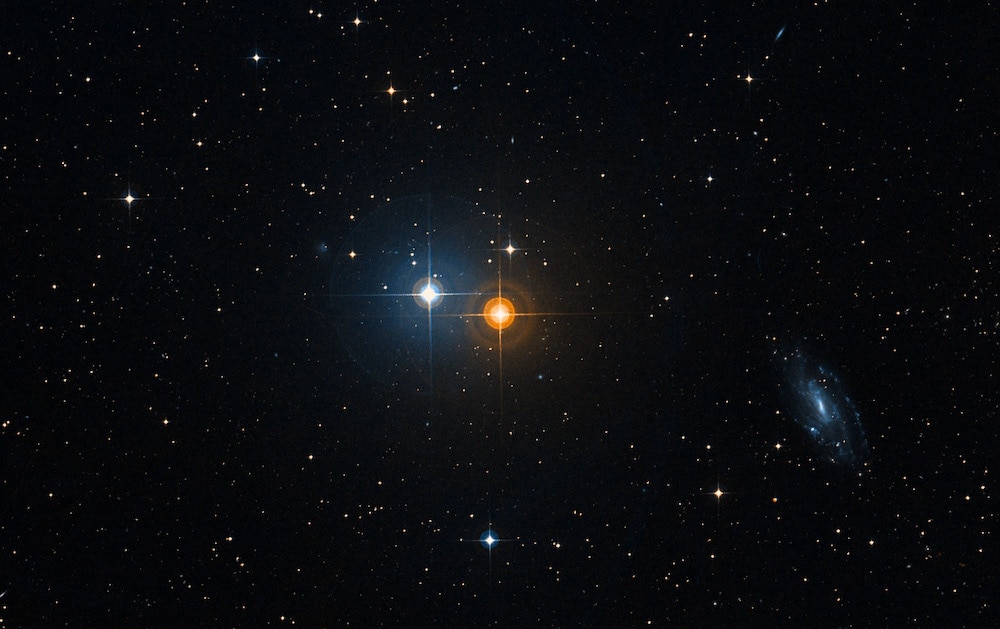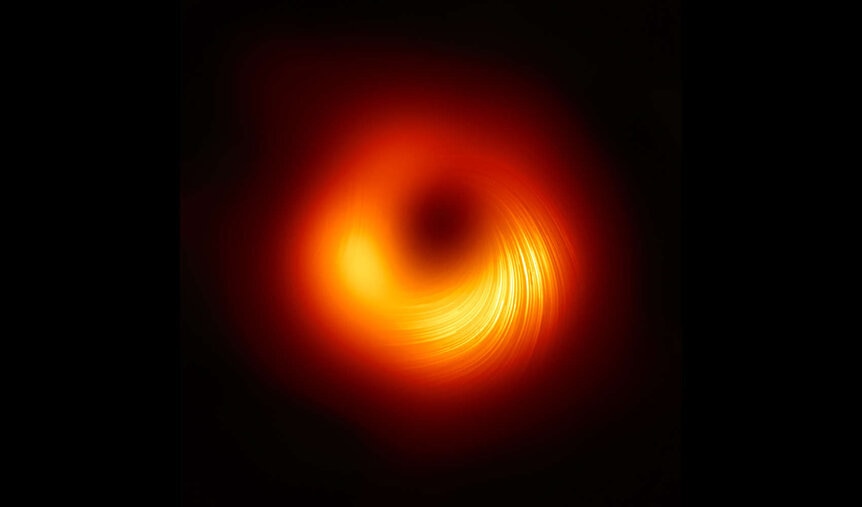What does a red giant look like up close? REALLY up close?
Pi1 Gruis seen up close and personal.

When you look up at the stars at night, they seem like dimensionless points, just dots in the sky. But that's not really true; they only appear small. The thing is, stars are actually huge — the smallest are still a hundred thousand kilometers across, and the biggest are hundreds of millions in diameter.
The problem here — not to be too obvious — is that they're far away. A star is immense, but the distance to them much vaster. Perspective robs them of apparent bulk, and we see them as sparks of light when trillions of kilometers removed.
… unless you're clever. There are tricks of physics that can allow huge proportions of magnification, the ability to increase the apparent size of remote stars enough to see details on them. No single telescope today can hope for the sort of resolution, but if you can combine their keen eyesight then it is possible to achieve this feat.
And when you point them at a red giant star, what you see is incredible.
That is the star π1 Gruis, which is very roughly 500 light years from Earth. It was once fairly similar to our Sun, though with about 50% more mass, but it's dying. It fused hydrogen into helium stably for billions of years, much as the Sun does now, but that fuel eventually was used up. Complicated processes ensued in its core, and the end result is that the outer layers have expanded and cooled: It's now a red giant, 500 million kilometers in diameter, big enough to reach past the orbit of Mars were you to replace it for the Sun in our solar system.
That's bad for the star, because its ultimate fate nears, but good for us, because it's big enough that even from 5 quadrillion kilometers away we can still see its disk.
This is done by using interferometry. Have you ever sat in a bathtub and wiggled back and forth to makes waves? If you have, you may have noticed that if you time it right you can make a wave that moves away from you just as an earlier wave bounces back toward you, momentarily creating a much larger wave. The crest of one wave adds to the other, creating one twice as big.
When two waves interact we call this interference; two crests make a much higher crest, two troughs combine to make a deeper trough. We call this constructive interference. If a crest from one wave hits a tough from another, they cancel out. This is destructive interference.
Light is a wave. If you have two telescopes separated by some distance, you can combine the wave information they get from a star in such a way that the waves from the two ‘scopes interfere with each other. This interference is incredibly sensitive to how the waves are emitted from the star, and so it's possible to, in a sense, reverse the process to convert the interference pattern seen into a map of the surface of the star. This technique is called interferometry.
In reality it's extremely difficult to do, but not impossible. The Very Large Telescope is actually 4 very large telescopes, and their light can be combined in exactly this manner, essentially mimicking the ability of a telescope the size the distance between the four. Each individual telescope is 8.2 meters across — huge — but their separation means they act as if they are single telescope 130 meters across!
Large enough to see details on the surface of a red giant 500 light years away, say. This technique has also been used to see the surfaces of Betelgeuse and other stars. Using longer wavelength light and other observatories, interferometry brought us the first image of the region around a black hole, and a very different use of it looks for gravitational waves from colliding black holes.
The interferometric image of π1 Gruis has enough resolution to see what's called granulation on its surface. These are the tops of huge plumes of gas inside the star that rise due to their own heat. The part at the surface cools and sinks, only to drop back inside the star, heat up, and rise again. This process is called convection, and it happens in the Sun too though on a far smaller scale. In red giants the convection cells are extremely wide, and can be many tens of millions of kilometers wide, as much as 25% of the diameter of the star itself.
We have a lot of theoretical understanding of how the interiors of stars work, and it's helped by extremely high-resolution images of the Sun. But the physics going on inside a star depends on its mass, age, chemical composition, and more. Being able to actually see what's happening on the surface of another star, especially one in such an advanced stage of its life, is critical. How else can we know if our theories are correct if we don't have observational data to back them up?
And what is the ultimate fate of π1 Gruis? It's currently blowing out a wind of material from its surface. Eventually it will lose all its outer layers, briefly become a planetary nebula and shine for a few thousand years before the gas dissipates, then all that will be left is its core, now a white dwarf, exposed to space. Eventually, over billions years more, that will cool so much it will turn black, and that will pretty much be that.
In the meantime, though, there's much it can teach us about the end stages of a Sun-like star. I'm glad we're smart enough to be able to learn from it.




























